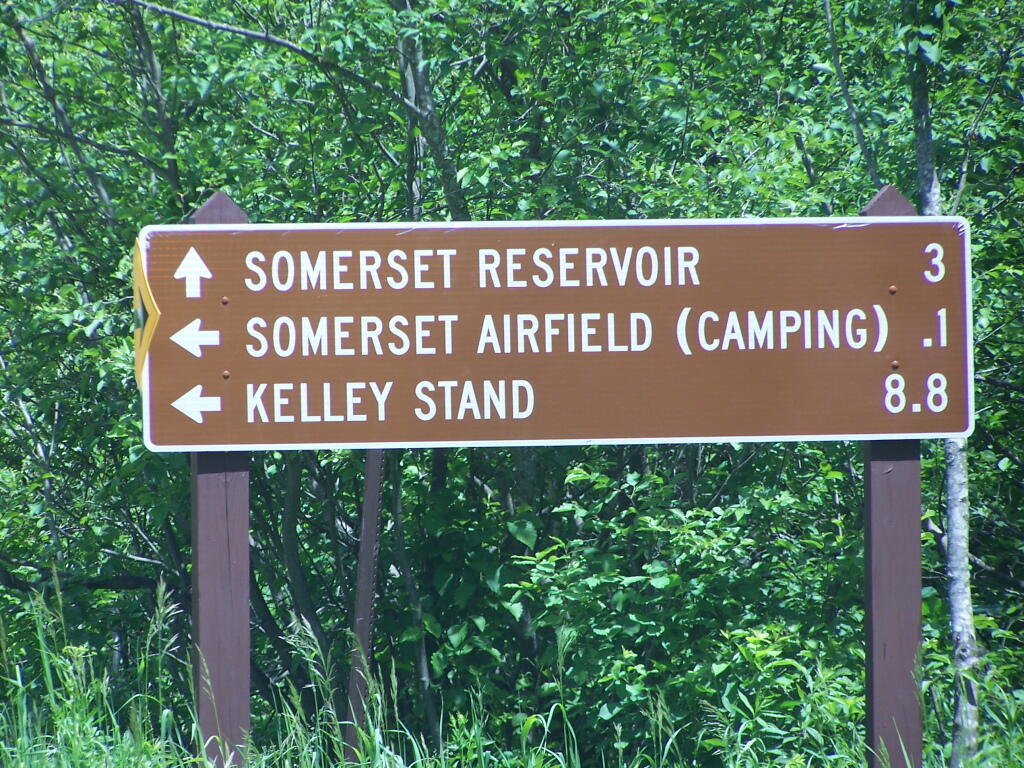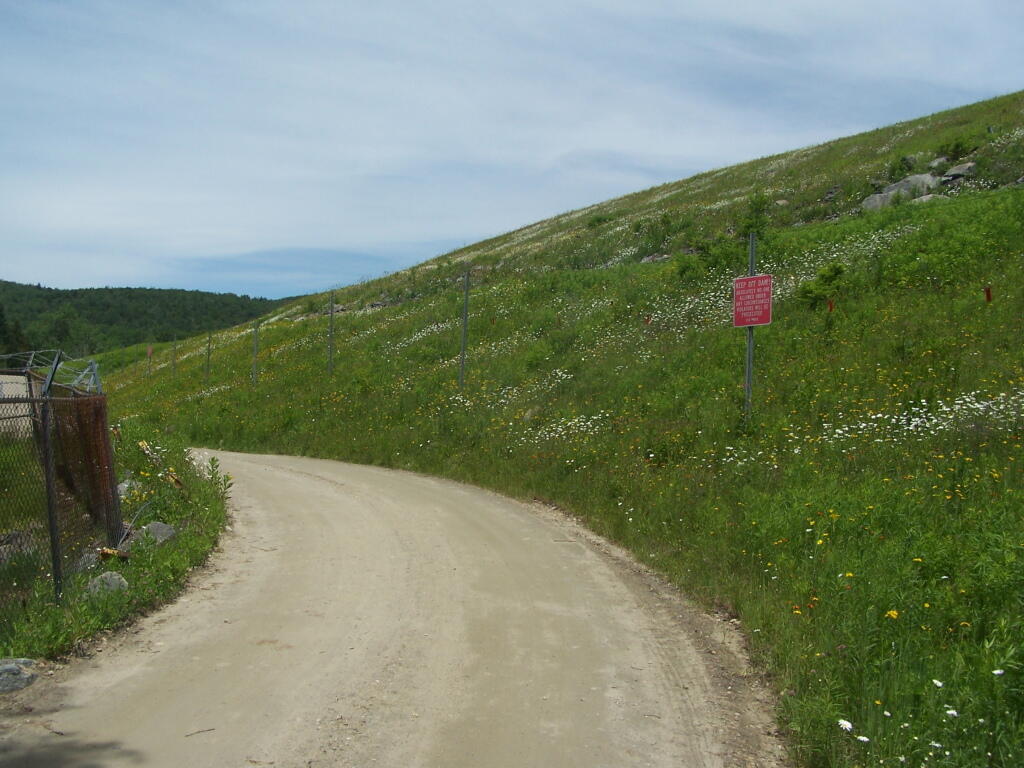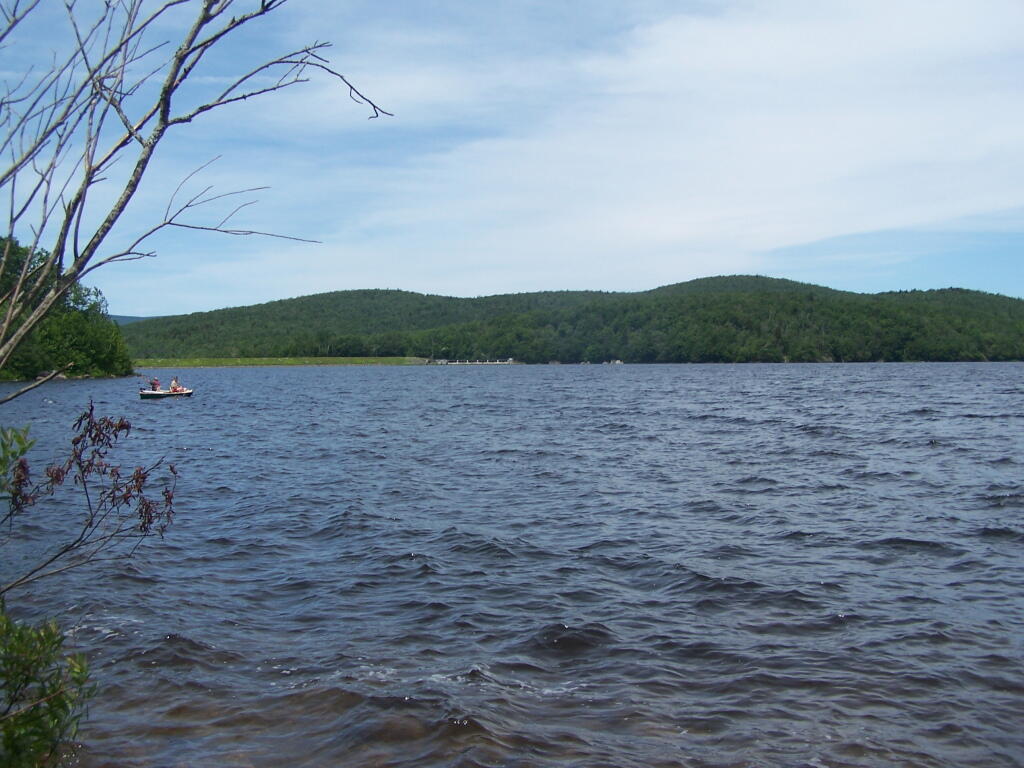Green Mountain National Forest
Somerset Airfield Sign
Fenced Off Reservior Impoundment
Massive Someset Reservior Dam
This dam does not actually make any power, but instead is simple used to store water and control water levels downstream for the approximately 85 MW of various hydropower plants located downstream, along with providing a steady source of water to the long shuttered Rowe Nuclear Plant, the first commercial electric generating nuclear plant built in the United States. The circa 1961 Rowe Nuclear Plant in Masschussets produced roughly 185 MW before closing due to cracking in it's containment structure.
Taken on Sunday June 19, 2011 at Green Mountain National Forest.Somerset Carry-In Access
For those wanting to bypass the Somerset Dam.
Taken on Sunday June 19, 2011 at Green Mountain National Forest.Somerset Reservoir South Trail Bridge
Somerset Reservior Dam
There is a massive earthen dam that holds back all of this water. To prevent erosion, they have big signs and fences to keep people off the dam.
Taken on Sunday June 19, 2011 at Green Mountain National Forest.





